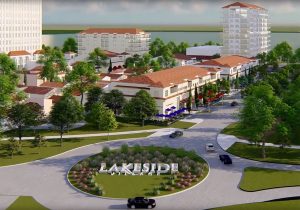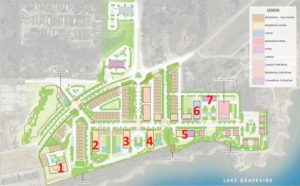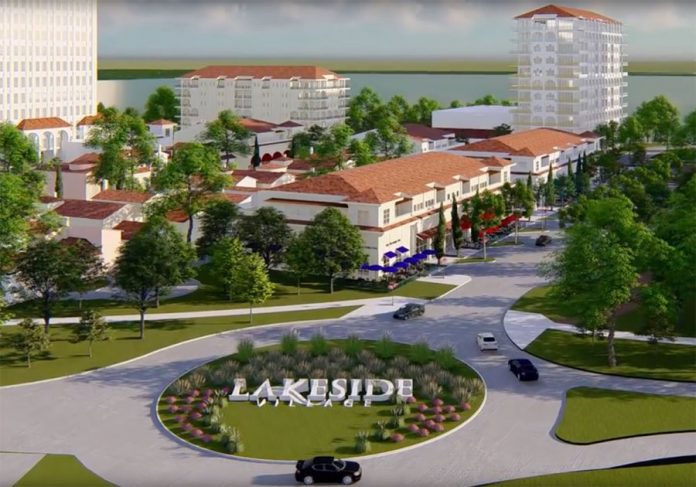
To TIRZ, or not to TIRZ– that was still the question before the Flower Mound Town Council on Monday.
Council voted 3-2 to spend $50,000 for the consulting firm of Hawes Hill & Associates to conduct implementation activity for the creation of a Tax Increment Reinvestment Zone (TIRZ) related to the Lakeside Village development.
A TIRZ district is a tool to provide an incentive for development and redevelopment within a predetermined geographic area. A base tax value is created within the zone and the TIRZ re-allocates additional ad valorem property taxes within it.
The council members voted on Aug. 6, 2018, to pay $20,000 to Hawes Hill & Associates, with George Schrader of Schrader & Cline, LLC, to conduct a feasibility study on whether a TIRZ District for Lakeside Village would benefit the town. The firm of Schrader & Cline, LLC created the town’s first TIRZ District– on both sides of the FM 2499 corridor– in 2005.
At that time, the town’s investment of $20 million– in partnership with Denton County– was projected to produce a $62 million return-on-investment.
“That original return of $62 million dollar has produced $83 million [in revenue for the town] so far,” said Town Manager Jimmy Stathatos during the council meeting; not to mention a brand new Town Hall and library expansion.
The Lakeside Village TIRZ study was finished in December 2018 and it indicated that the total estimated revenues (between $71 million – $140 million) from the project would provide sufficient funds to support the requested $20,550,727 in public infrastructure costs associated with the project and would mean a TIRZ District would be a viable option to help jump-start the project.

The 35-acre mixed-use development is located immediately south of Lakeside DFW on Lake Grapevine and west of FM 2499. Realty Capital, developer for both projects, have projected approximately $33.6 million in infrastructure and amenities. They are requesting the TIRZ to fund $20.5 million of that total.
Town Economic Development Director Andrea Roy presented several TIRZ scenarios, based on different investment percentages from the developer, the town and Tarrant County.
In talks with Tarrant County Commissioner Gary Fickes, Roy said he indicated the county would be interested in contributing 50-percent of new property taxes generated within the TIRZ.
Given that contribution percentage, she said the resulting scenario of Flower Mound contributing 75-percent into the TIRZ– with the town retaining 25-percent of the project’s added value– plus the base value and 100-percent of the sales tax generated would be the best result.
Roy added that, over its 20-year life span, the town is expected to receive $90 million from the Lakeside Village TIRZ. She also assured the council that the original $20,000 feasibility study contract and the $50,000 contract for Hawes Hill & Associates, with George Schrader, to conduct implementation activities for creation of a TIRZ will be totally reimbursed to the town when the TIRZ is activated.
Council members Sandeep Sharma and Jim Engle were the two nay voters opposed to spending money on the next-step consultant contract.
Sharma said he’d rather spend the $50,000 on other projects around the town.
Engle was hesitant about spending the money until learning how things in the Texas Legislature in Austin would play out regarding the property tax rollback from 8-percent to 2.5-percent– House Bill 2 and Senate Bill 2– and the reduced revenue potential.
“This [the consultant contract] needs to be delayed two months until we know what happens in Austin,” said Engle.
Unfortunately, Realty Capital has set April 17 as the deadline for a Letter of Intent from the town regarding the creation of the TIRZ District; sort of like a real estate Sword of Damocles. Roy said the town has a good relationship with the Realty Capital developers and she’d approach them about the possibility of perhaps delaying that April deadline.
Mayor Pro Tem Jason Webb referred the other council members to the Chapter 380 agreement request from Duke Realty Limited Partnership, passed unanimously earlier in the meeting, for a total cost to the town of $221,837, providing a minimum net benefit of over $490,429 million.
“Right now, we’re looking to spend $50,000 so we can get up to $90 million,” he said.
Council member Kevin Bryant pointed out that: “The reason for the TIRZ is not only that we get the [Tarrant] county’s help, but then the sales tax; we get 100-percent of that.”
The one “hitch-in-the-get-along” is that Fickes said that the county won’t participate in a public facility– such as the proposed Fine Arts/Performing Arts Center.
“Well, why can’t we use the county’s contribution to the TIRZ solely for the infrastructure and then use our part for the building,” asked Bryant. An earlier estimate was between $6 to $10 million, depending on size and amenities.
Roy said all the various possibilities and the questions that neither she nor the council members have answers are the exact reasons for spending $50,000 for expert consultants.
“These people are the best of the best,” said Roy.










.jpg)



